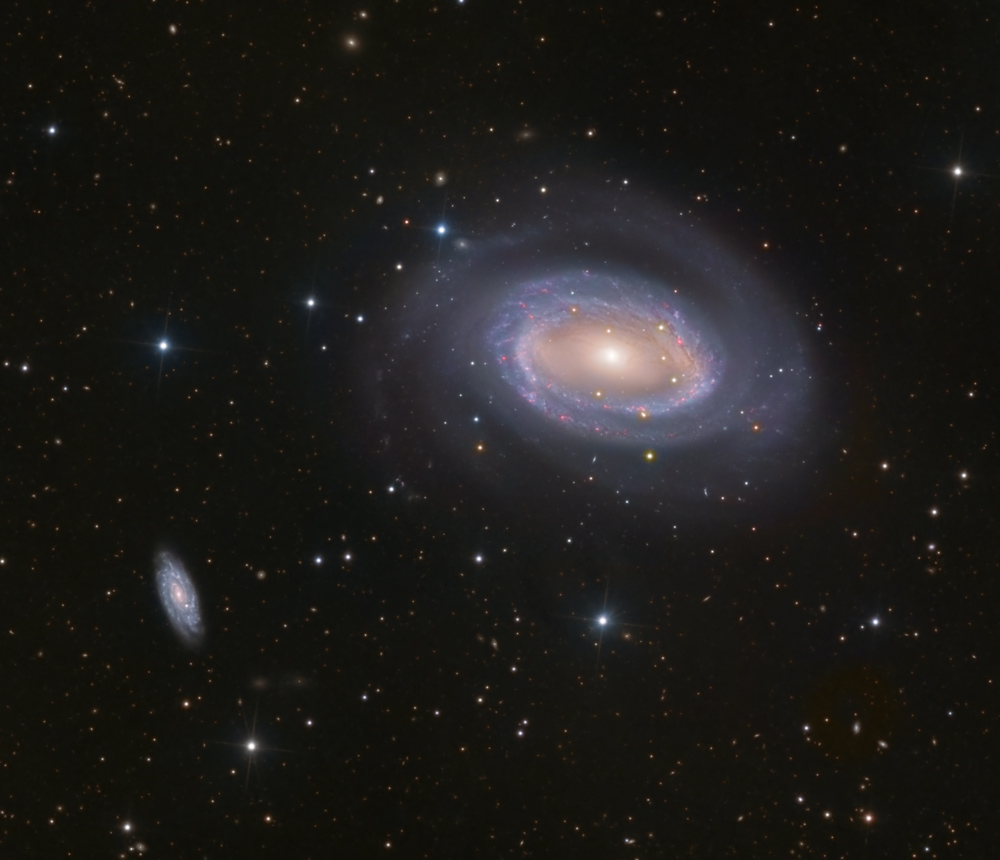
https://en.wikipedia.org/wiki/Barred_spiral_galaxy
NGC 4725 is a large intermediate
barred spiral galaxy, presenting to us at a 46 degree angle, located near another large galaxy (not in the frame); the tidal forces from the gravitational interactions between these massive
galaxies has resulted in NGC 4725 being distorted. NGC 4725 is estimated to be about 40 million light years away from us; at that distance, it is well over 100,000 light years in diameter
(similar in size to our Milky Way, itself a large galaxy).
The smaller galaxy below and to the left of NGC 4725 is NGC 4712, which is five times as far away from us as NGC 4725; it is just in the same line-of-sight, but not related to NGC 4725 in any way.
Two distinctive features of NGC 3628 (in addition to its odd shape) are (i) the ring structure surrounding the central bar, in which much star formation is occurring (the pinkish regions are particularly
large, intense star-forming regions), and (ii) the fact that it seems only to have a single spiral arm.
As usual in a deep-sky image, there are a lot of small (meaning distant) galaxies in the uncropped versions of the image (look for the oblong and/or fuzzy "stars").
Copyright 2022 Mark de Regt